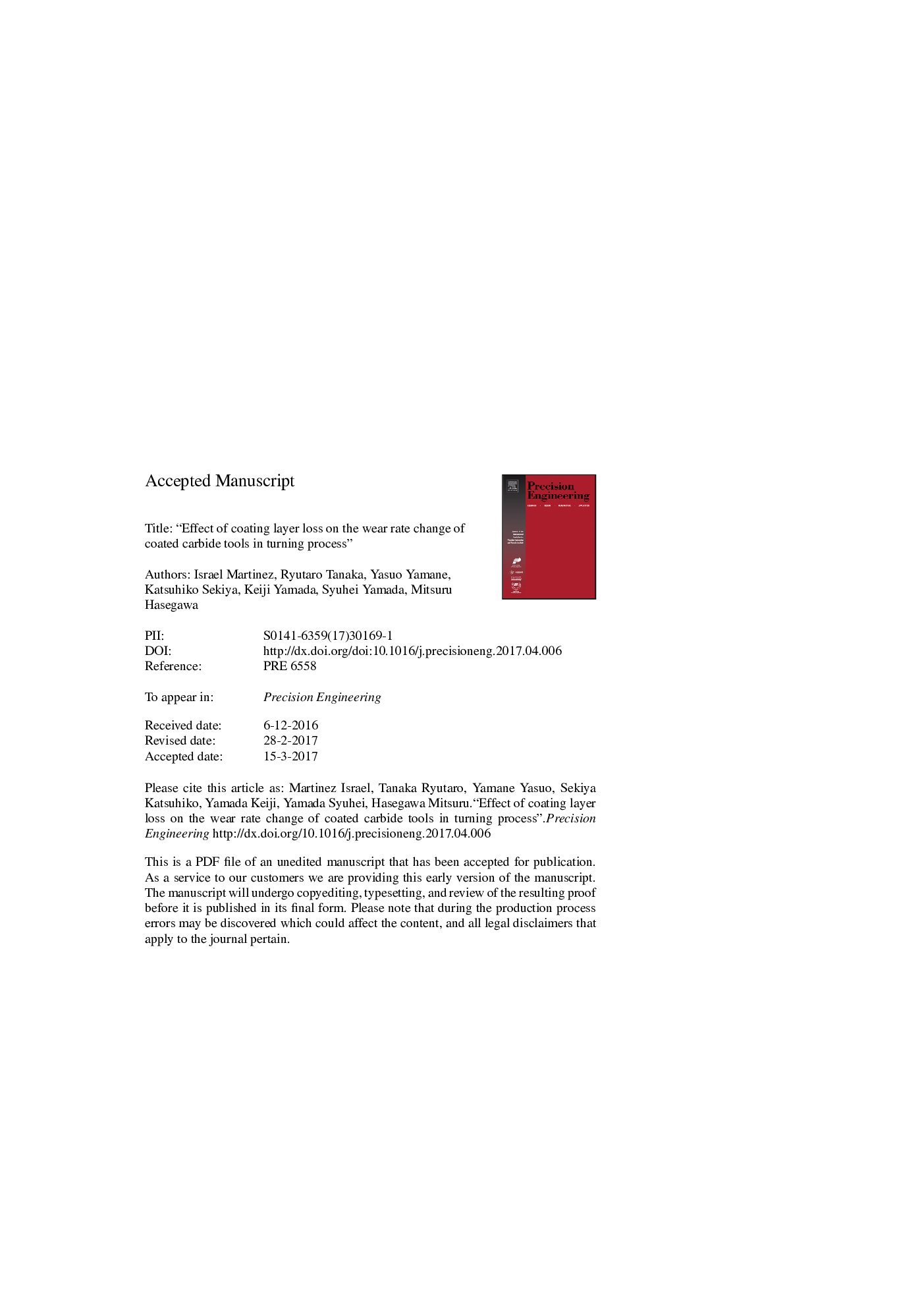| کد مقاله | کد نشریه | سال انتشار | مقاله انگلیسی | نسخه تمام متن |
|---|---|---|---|---|
| 5019018 | 1467838 | 2017 | 19 صفحه PDF | دانلود رایگان |
عنوان انگلیسی مقاله ISI
Effect of coating layer loss on the wear rate change of coated carbide tools in turning process
ترجمه فارسی عنوان
اثر از دست دادن پوشش لایه در تغییر نرخ سایش ابزار کاربید پوشش داده شده در روند چرخش
دانلود مقاله + سفارش ترجمه
دانلود مقاله ISI انگلیسی
رایگان برای ایرانیان
کلمات کلیدی
موضوعات مرتبط
مهندسی و علوم پایه
سایر رشته های مهندسی
مهندسی صنعتی و تولید
چکیده انگلیسی
This paper reports an experimental study of flank wear on TiN- and TiAlN-coated carbide tools in the turning of AISI 1045, AISI 4135, ductile cast iron, and Inconel 718, and it was conducted with the purpose of showing the relationship between the change in wear rate and the loss of coating layer on the cutting edge. It was found that the relation between cutting distance and flank wear in log-log scale clearly shows the change in wear rate, thus providing a straightforward way to determine the relation between worn out coating layer and increase in wear rate. This relation was confirmed by analyzing the presence of coating layer before and after the inflection point appears by means of scanning electron microscopy (SEM) and energy-dispersive X-ray spectroscopy (EDS) photographs. It was observed that the coating layer on the flank face is worn away and finally is worn out. However, even if the layer on the flank face is worn out, tool wear is suppressed as long as the coating layer on the cutting edge exists. On the other hand, when the coating layer on the cutting edge is worn out, the wear resistance of the tool depends on the substrate; thus, the wear rate increases. According to the results, as the cutting speed increases, the change in wear rate appears in a shorter cutting distance, making flank wear to be high. High pressure and high temperature act on the rake face; thus, thermal stability of the coating layer in the cutting edge is important. A low cutting speed decreases cutting efficiency, but a high cutting speed causes flank wear to be high; therefore, in order to optimize machining cost, an acceptable cutting speed, from the standpoint of tool wear, should be selected.
ناشر
Database: Elsevier - ScienceDirect (ساینس دایرکت)
Journal: Precision Engineering - Volume 50, October 2017, Pages 1-7
Journal: Precision Engineering - Volume 50, October 2017, Pages 1-7
نویسندگان
Israel Martinez, Ryutaro Tanaka, Yasuo Yamane, Katsuhiko Sekiya, Keiji Yamada, Syuhei Yamada, Mitsuru Hasegawa,
